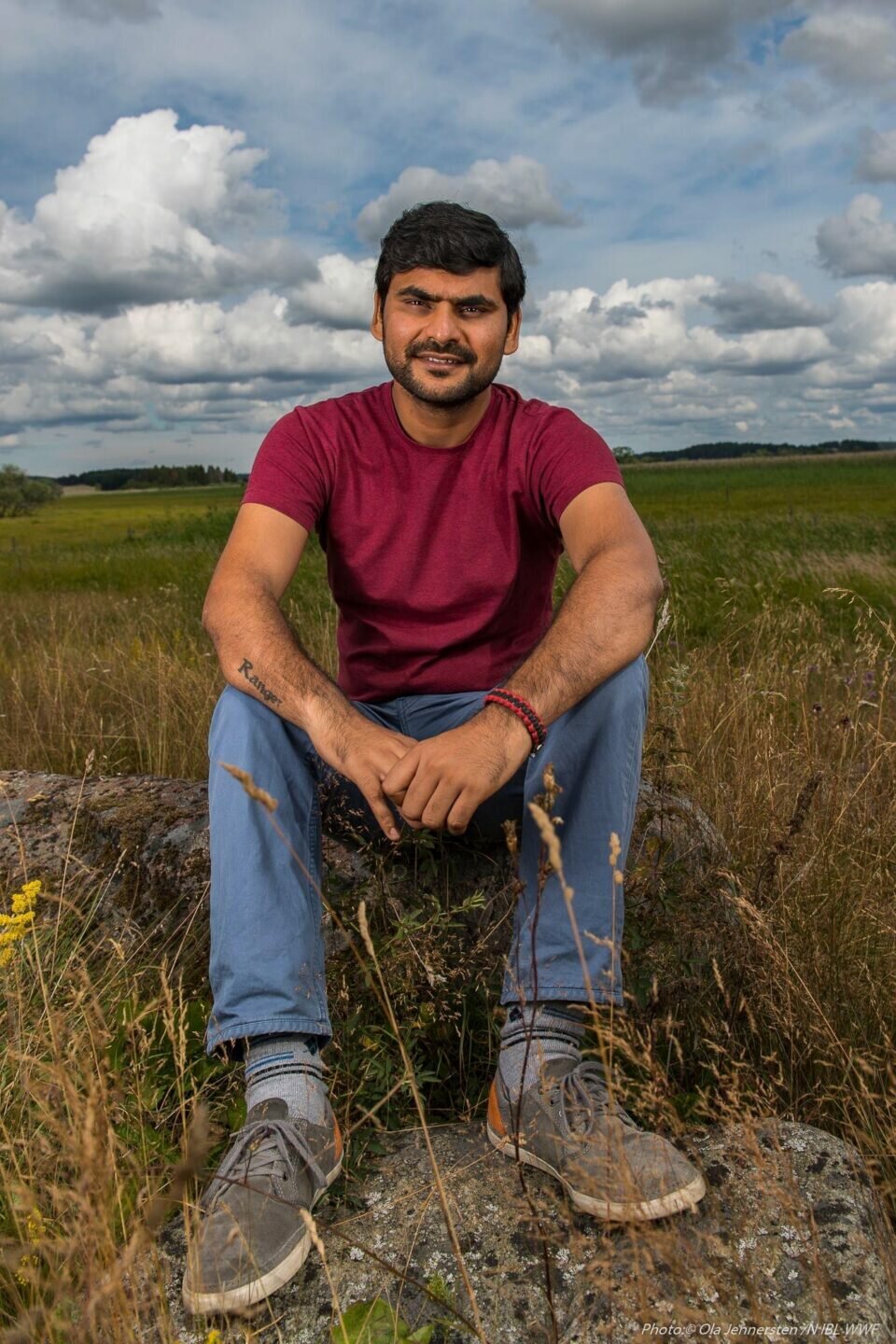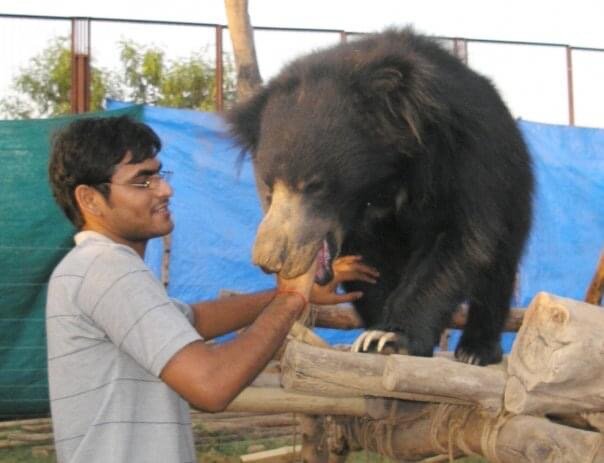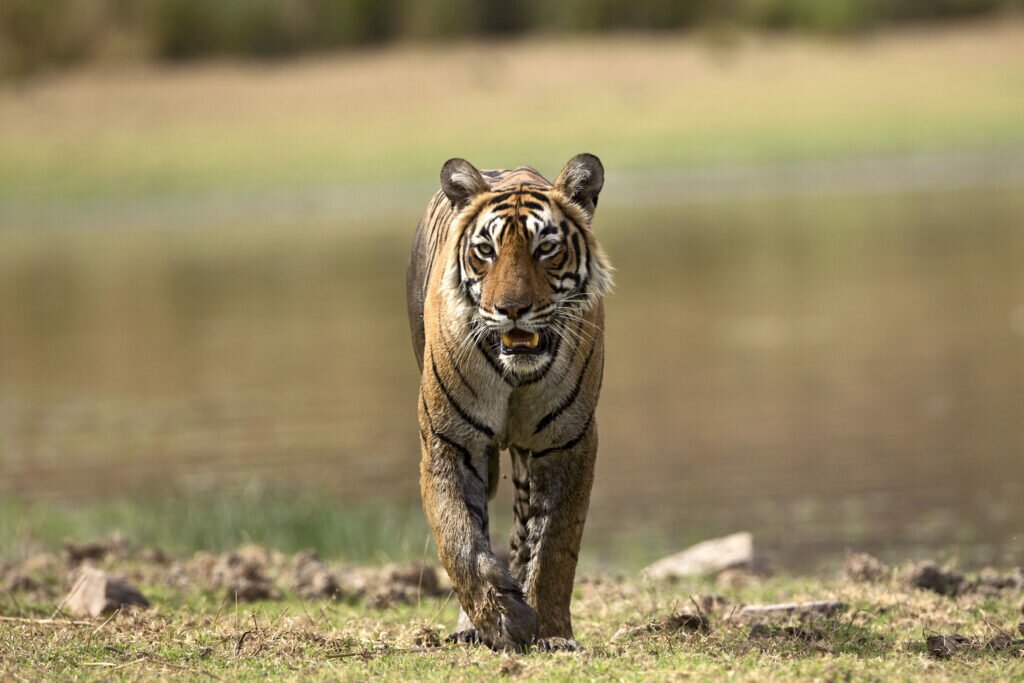At first glance, wildlife crime expert Rohit Singh’s career highlights spool like a daisy chain of Steve Irwin-esque episodes, narrated in something resembling good-humoured bewilderment. There’s the time he helped capture and release a wild bear in Kashmir, while working as a zookeeper at the world’s largest bear rescue centre in India.
“We were in our hotel room and received a call about a bear hiding in the reception. We found this giant black mama bear and her cubs hiding there; you can imagine how difficult it was to tranquilise and release it into the forest,” he recounts.
As a former park ranger who worked in vast and variously rugged rural India, he’s endured onerous conditions. “When I first started at WWF I worked at a 7,000 sq km park that had over 100 rangers. Singapore, in contrast is 700 sq km in size with thousands of policemen – and that’s not counting the CCTV cameras,” he shares, laughing. “We had to walk eight hours to make a phone call and lived without network connectivity for almost four months at a time. During the wet season we were disconnected from the outside world, surviving on dried fish and rice as we couldn’t cross the river for fresh produce,” he regales me with a twinge of nostalgia.
It thus isn’t surprising that the unusually exuberant advocate is especially partisan to the ranger profession; a tattoo that spells ‘ranger’ is emblazoned on his arm in bold script.
Growing up in the northern Indian town of Aligarh, Singh’s affinity for animals was kindled over blisteringly hot summer vacations at his grandparents’ in Nagla Khusal, a village in Uttar Pradesh crackling with wildlife. “We saw wolves, wild pigs, snakes, bluebells and deers. That’s where my interactions with animals began, which were followed by a crazy phase where I had eight dogs at home,” he says.
After earning his Master’s degree, he signed on to hand raise bear cubs and rescue bears from poachers and traders, at the aforementioned bear rescue centre. Here, the mammals numbered over a thousand. “My family still doesn’t understand what I do. My father has worked for Heinz his whole life and my brother also makes tomato ketchup, while I decided to clean bear poop,” he says, laughing. It’s the unpredictability that keeps him in the field of wildlife conservation.
Now based in Singapore, the Director of Wildlife Enforcement and Zero Poaching at WWF’s work on the ground is limited, though he never feels stultified. Singh works with national agencies as well as non-profit organisations within and beyond Singapore to develop and strengthen conservation law enforcement and protected area management programmes. He also helps to frame industry and welfare standards for poachers, as the president of Ranger Federation of Asia.
Though his new home isn’t particularly vulnerable to the scourge of poaching, it’s also a major transit hub for illegal wildlife trafficking. In recent years, the Singapore authorities have intercepted a number of large shipments of illegal wildlife products, including 8.8 tonnes of ivory that were crushed over live-streaming in 2020. In March, it was reported that the number of live animals seized from the illegal wildlife trade in 2021 in Singapore was more than twice of that impounded 12 months earlier.
Those issues are all within Singh’s remit at WWF. He sheds light on the lesser-known aspects of conservation work within and beyond the highly urbanised country.
What have been the biggest changes in conservation in the past few years?
There’s a lot of awareness and I’m really optimistic about the younger generation that is much more aware of wildlife issues. I was recently at a Vietnamese restaurant in the UK with my five-year-old daughter. She saw shark’s fin soup on the menu and said, ‘Papa, this is not nice, we should stop it.” While there is heightened awareness, the threats to wildlife are increasing every day. In the past 10 years, we have lost virtually all tigers in Cambodia, Laos and Vietnam, while tiger numbers across South-east Asia are going down. We’ve lost 95 per cent of tiger habitats, so the pressures are rising and we have to continue working towards bringing the difference.
What unique challenges do rangers face?
In the past 15 years, an average of two rangers have lost their lives in the line of duty on a weekly basis. Poachers aren’t their only threat; about 25 per cent of rangers are killed by the very wildlife they are trying to protect. This can be avoided by providing them with first aid training, which only 25 per cent of rangers globally have. There aren’t enough rangers and they do not have the basic equipment or even necessities such as clean drinking water and sanitation.
They also don’t get to see their families as often as we do. I remember interacting with one ranger whose son calls him ‘uncle’, because he only visits his home once in eight months. We can laugh about it, but it shows the sacrifices rangers and their families make so that you can see your Big Five while on safari.
That sounds like a pretty gnarly job.
It’s not just about dangerous situations, but also the physical and mental stress. Ultimately, we are talking about a person who is not well recognised, stays apart from his/her family and isn’t properly trained to do a job under extremely difficult conditions. We really need to think about how to keep them motivated and address their mental health issues.
What is the biggest misconception about being a ranger?
That their job is glamorous; they are depicted jumping off choppers and catching rhinos in the TV world. In reality, rangers do a variety of work in addition to law enforcement. They are first responders in firefighting and help out during floods. They monitor wildlife and educate communities. They also monitor climate conditions and are planetary health workers; zoonotic disease is all about imbalance between nature and humans, so rangers are right in the middle of that and have to ensure that there is no spill over disease.
We’ve noticed more technologies such as AI being employed in the field of wildlife conservation. Is it the next big thing?
We are using camera traps to monitor tiger populations and AI to see if we can predict poaching hotspots. It’s hard to say if it is the next big thing but we have done it at smaller scale, which is showing good results. However, you can imagine that any AI tool requires a lot of data to deliver predictions, which – in most cases – may not be there. I always say that tech can never replace the human brain. Tech has to be usable, scalable and affordable. For instance, you may have million-dollar technology in place, but will the park authorities in Laos or Cambodia have the capacity to maintain such a complex system? We should always keep the end-user in mind.
Singapore is a major transit hub for wildlife trafficking. How does your team work multilaterally to stem the transnational trade?
We are working at multiple levels: with shipping industries, the financial sector on policies that impact wildlife trade, as well as with conservation organisations and private sectors. WWF Singapore actively monitors wildlife crime on social media through our cyber spotters. They alert the authorities when they detect animals being sold over social media platforms.
Last year, Singapore’s ban on the domestic trade in ivory kicked in. Has this resulted in any observable impacts?
It is too early to say, but these are key milestones, and the Singapore government has done something remarkable here. We hope other countries in the region will follow its lead because ultimately rangers’ lives will be easier if the demand stops. Wildlife trade is an international crime, which is why you need a global commitment, and any national effort contributes to that. If you put too much pressure on one transit point, for example, poachers and traders will just use a different route.
Luxury is inextricably linked to the illegal wildlife trade. As the industry rushes to reinvent itself in the wake of Covid-19, what should consumers take note of?
There are global benchmarks that you can follow when buying a product. For example, sustainably harvested timber products come with the FCC certification. Being aware of such standards and finding out whether your products are being sustainably harvested will put pressure on brands to change their behaviour.
Till 9 April, WWF is raising awareness of tiger conservation through its AR-mazing Tiger Trail 2022, with 33 life-sized tiger sculptures exhibited across Singapore along a gamified trail complete with Instagram AR filters.


